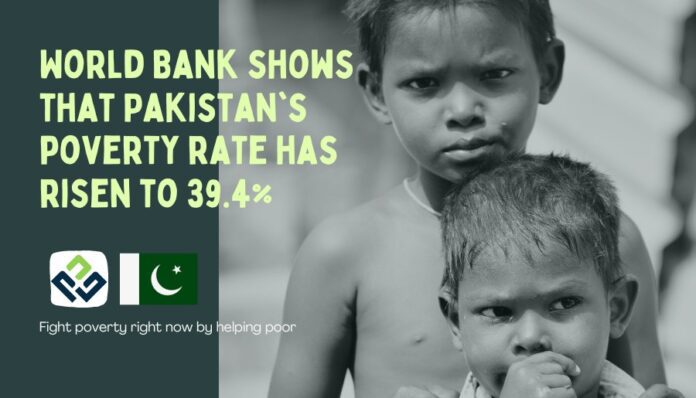Pakistan is grappling with a formidable challenge – the alarming surge in poverty rates, currently standing at a distressing 39.4%. Just a year ago, this figure was at a concerning 34.2%. These statistics paint a grim picture, with approximately 95 million Pakistanis trapped in the throes of poverty, and 12.5 million living below the poverty line.
The World Bank, a prominent institution known for assisting nations in their financial endeavors, is deeply concerned about Pakistan’s economic trajectory. It asserts that Pakistan’s economic growth strategy has fallen short of expectations. Several factors contribute to this predicament, including the relentless rise in the cost of essential commodities like food and electricity. Furthermore, Pakistan faces daunting climate challenges, such as recurring droughts and floods, exacerbating the hardships faced by its citizens.
Challenges in Education and Healthcare
However, these challenges are not exclusive to the economic sphere. Pakistan’s education and healthcare sectors are grappling with a ‘silent’ crisis. A significant number of children in the country are malnourished, leading to inadequate physical and cognitive development. Consequently, these children are not receiving the education they deserve, and many are tragically succumbing to illnesses at a much younger age than they should. This situation is disheartening and warrants immediate attention and resolution.
The World Bank’s Recommendations
The World Bank, recognizing the urgency of the situation, has outlined a series of recommendations aimed at revitalizing Pakistan’s economy over the next decade. These recommendations, if implemented effectively, could be instrumental in steering the nation towards economic prosperity.
1. Enhancing Tax Revenue:
One of the pivotal suggestions is to augment the collection of tax revenue from both commercial and agricultural enterprises. Additionally, ensuring the equity of the tax system is paramount. Presently, some individuals do not contribute their fair share of taxes, exacerbating the existing economic challenges. By rectifying this imbalance, Pakistan can expect to witness substantial improvements in its economic landscape.
2. Leveraging Land and Agriculture:
Taxes levied on land and agricultural production represent another viable source of revenue for Pakistan. Strategic modifications to the regulations governing trade can open up new opportunities for the country to export more goods to other nations. This could lead to increased employment and enhanced financial prospects.
The Urgency of Action
The World Bank underscores the urgency with which Pakistan must act upon these recommendations. Aligning its education and healthcare systems with those of comparable countries could potentially result in an astonishing 32% increase in the GDP. This represents a significant stride towards a brighter economic future.
Conclusion
In conclusion, Pakistan finds itself at a critical juncture, grappling with rising poverty rates and multifaceted challenges. The World Bank’s comprehensive recommendations offer a ray of hope, providing a clear roadmap to revitalize the nation’s economy. By implementing these suggestions, Pakistan can not only alleviate poverty but also unlock its immense economic potential. The time to act is now, for the benefit of the 95 million Pakistanis whose lives hang in the balance.

